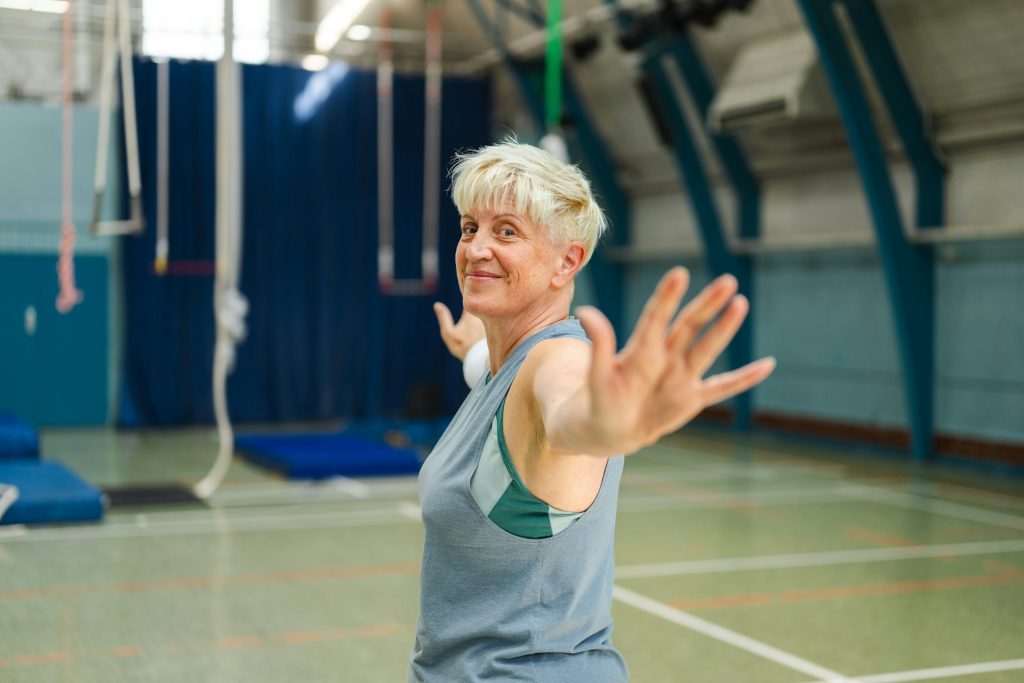Staying on your feet becomes more important as you get older, especially when it comes to keeping your independence. A simple misstep can turn into a long recovery and make everyday activities harder. That’s why fall prevention matters. It’s not about doing anything extreme, either. It’s about staying steady, strong, and confident as you move through daily life.
One of the best ways to support that goal is with fall prevention exercises. These movements are designed to improve balance, build strength, and build awareness of how your body moves. Paired with professional support like physical therapy for seniors, these exercises can help create safer routines and reduce the chances of falling in the first place.
Understanding The Risk Of Falls For Seniors
Balance changes over time. Sometimes it’s due to muscle loss, vision issues, or the side effects of medications. Other times, it’s a slow shift in how the body adjusts to different surfaces or movements. Even worn-out shoes or a loose rug can tip the scales against someone.
Common reasons older adults experience falls include:
– Weak leg muscles or poor coordination
– Poor lighting or cluttered walkways at home
– Health conditions that affect balance, like arthritis
– Side effects from medications that cause dizziness
– Reduced flexibility and slower reflexes
Although the risks might seem like they pile up, there are simple ways to turn the tide. That’s where movement routines and physical therapy for seniors come in. With guidance, seniors can reconnect with how their body feels in motion. One man in Scottsdale, for example, started working on his balance after tripping on his doorstep twice within a week. After learning a few daily steadiness drills from a therapist, he felt stronger and more secure within a month.
Falling doesn’t always come from a big mistake. More often, it’s a chain of small things adding up. Becoming aware of those pieces and working toward better control can slow it all down and give older adults more time and peace in how they move.
Top Fall Prevention Exercises For Seniors
The right moves can make a big difference in how steady someone feels. Fall prevention exercises don’t need any fancy equipment or big space. Many routines can be done at home, even from a chair if needed. The key is sticking to them regularly and doing them safely.
Here are four helpful categories of exercises to consider:
1. Balance Exercises
– Standing on one foot while holding onto a sturdy surface
– Heel-to-toe walk in a straight line
– Shifting weight from side to side while keeping control
2. Strength Exercises
– Seated or standing leg raises
– Sit-to-stand from a sturdy chair without using hands
– Wall push-ups to build upper body strength
3. Flexibility Exercises
– Shoulder rolls, neck stretches, and ankle circles
– Gentle forward bends to stretch the back and hamstrings
– Seated stretches that target tight areas without strain
4. Coordination Exercises
– Easy Tai Chi sequences or follow-along videos for flow
– Practicing reaching for objects slowly and returning to a standing posture
– Controlled stepping in different directions to simulate real-life movement
Doing the right type of movement regularly helps the body remember how to stay stable. There’s no rush. Consistency matters more than speed. Seniors in Scottsdale can start slowly and safely, focusing on what works best for their body each day.
Creating A Safe Exercise Environment
Before getting into a routine, it’s smart to think about the space around you. A safe environment makes a big difference, especially when doing balance or coordination exercises. The goal is to reduce distractions and remove anything that could get in the way.
Start by clearing common walkways. That means removing throw rugs, loose cords, or clutter. Keep the space open and easy to move around in, especially for routines that involve side steps or shifting weight. Good lighting matters too. Rooms should be well-lit at all hours, especially in corners and near steps.
Other tips for creating a safer space to move include:
– Use a sturdy chair or countertop for support during balance drills
– Wear sneakers or shoes with non-slip soles
– Avoid fuzzy slippers or open-backed footwear when exercising
– Keep a water bottle nearby to stay hydrated and avoid dizziness
– Set a phone or alert device within reach in case help is needed
Some people also feel more comfortable when someone stays nearby. It doesn’t have to be a therapist right away. Even a family member or friend offering quiet supervision can help in the beginning. A little reassurance goes a long way when learning new movements or pushing limits gently.
The Role Of Physical Therapy In Fall Prevention
Physical therapy for seniors adds another layer of support. A qualified therapist can check how someone walks, where they’re feeling the weakest, and what kind of exercises are safest. More important, they can create a plan that fits around someone’s day, health level, and goals.
Every person moves differently, especially as they age. Some might feel strong in their legs but shaky when turning quickly. Others feel okay on flat surfaces but lose balance when stepping sideways. A physical therapist can pinpoint those areas and focus on them with targeted exercises.
One senior in Scottsdale had trouble walking on uneven curbs while out shopping. After a few sessions with a physical therapist who focused on ankle flexibility and mid-step control, she walked more confidently, even when the pavement was less than perfect. It didn’t happen overnight, but because her therapy plan matched her daily life, she stuck with it.
There’s also an emotional shift that happens during guided therapy. Instead of just hoping not to fall, many seniors build trust in their body again. That slowly opens the door to walking more, getting outside, and saying yes to activities they once avoided.
Staying Steady Means Staying Independent
The more someone moves with care and strength, the more their confidence grows. Fall prevention exercises don’t just help with balance. They help seniors stay engaged, mobile, and involved in everyday life. Maintaining independence means still being able to handle personal routines, shop, garden, or even take a short trip without depending on someone else to be nearby.
A good start is picking two or three exercises from each group and turning them into a small daily habit. It doesn’t need to be a full workout session. Just a few minutes can help build momentum. Morning stretches, mid-day walks, or evening balance drills are all great places to begin.
Even better, these habits can be blended into the natural rhythm of the day. Reach for something on a high shelf? That’s a good time to practice controlled arm movement. Getting up from a chair? Use that as a strength-building moment. Each movement adds up to better posture and body awareness.
Staying independent doesn’t mean doing everything alone. Taking small, smart steps like improving balance or getting support from professionals when needed allows seniors to keep making choices that feel right for them. Aging safely doesn’t have to feel like giving things up. It can open space for more freedom and comfort.
If you’re working toward more balance and confidence in your daily routine, the right kind of support can make a big difference. Learn how physical therapy for seniors in Scottsdale can help you stay steady and independent. At Eightlimfit, we’re here to walk beside you every step of the way.

